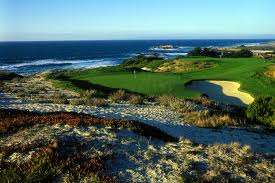Advantages
One of Kentucky Bluegrass' main advantages over all other cool season grasses is its ability to spread; the fact that it can spread and heal itself when damaged is probably the greatest reason for its popularity. It spreads through horizontally running rhizomes just below the surface of the ground. Kentucky Bluegrass also has better cold tolerance than other cool season grasses. It can withstand periods of very cold weather that would normally damage fescue, ryegrass, or bentgrass; the adaptation zone for bluegrass extends through the cool-humid and cool-arid regions. Poa pratensis is very disease resistant, drought hardy (in the non-summer months), and also very tolerant to everyday wear-and-tear.
Disadvantages
During the summer months: May through August; bluegrass becomes a major water user. Its root system recedes because of the hear and lack of water naturally, so its in constant need of a fresh watering and becomes very high maintenence. Also, without proper care and nurturing, bluegrass can be one of the first grasses to go dormant in the fall when the temperature really drops. On the positive side of both of these, though, is the fact that it has a quick bloom period in the spring, and recovers extremely quickly from drought wear. Another disadvantage is that Kentucky Bluegrass is not very shade tolerant and will thin or die if planted in heavy shade. One factor that can help is the fact that there are many other grass types that are compatible with all types of bluegrass, such as fine fescues, that are very shade tolerant and will not harm the grass one bit.

